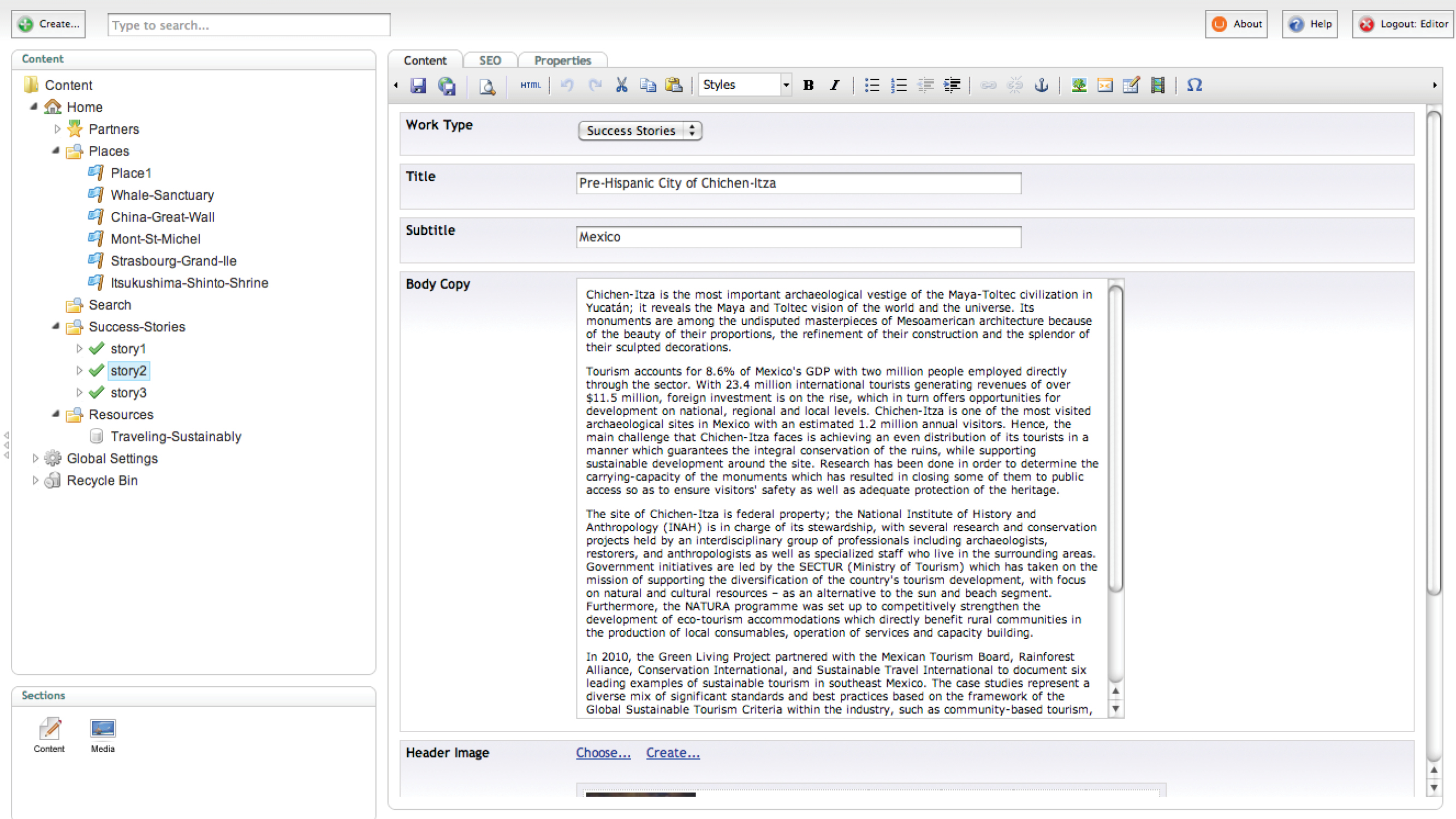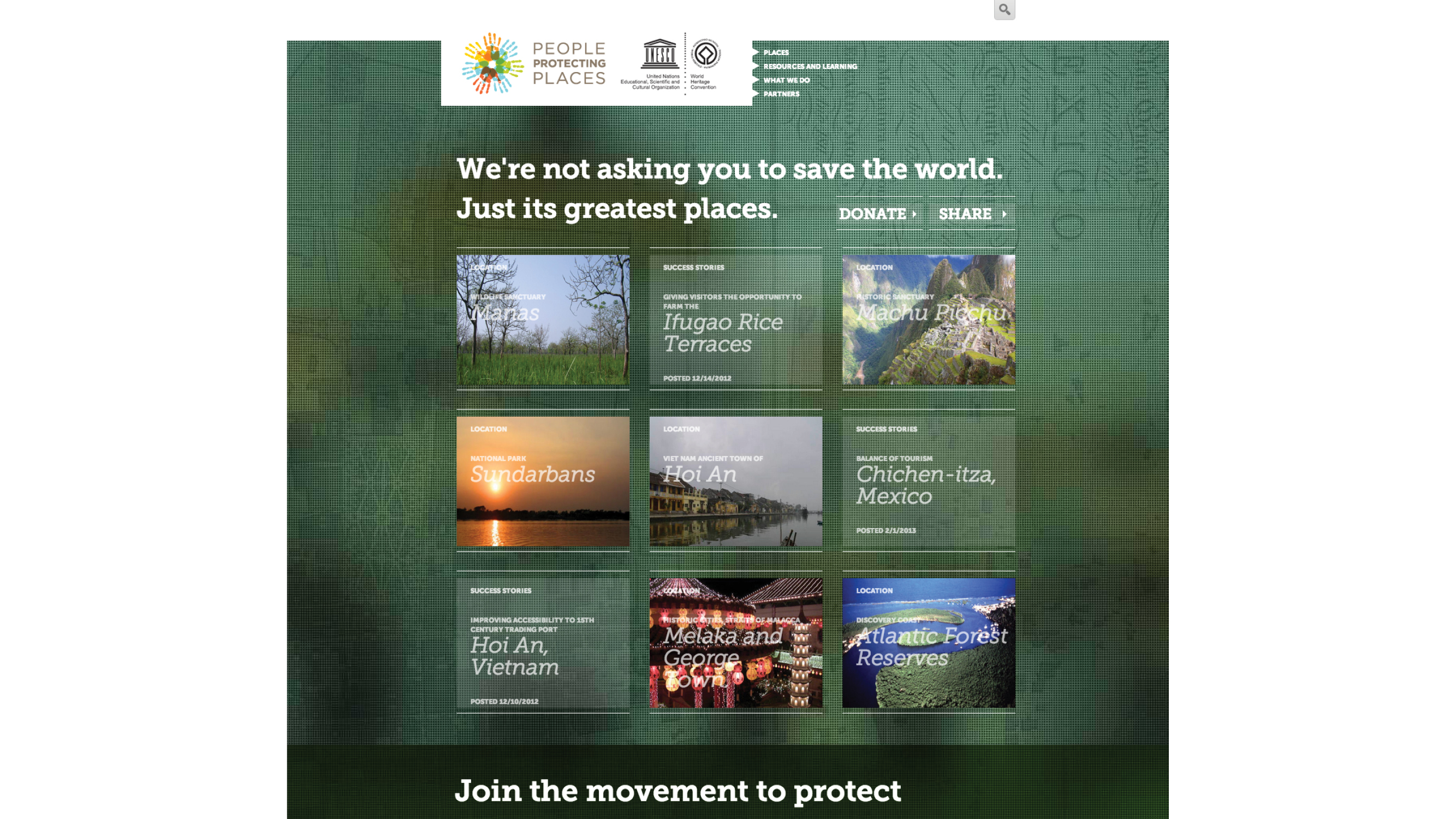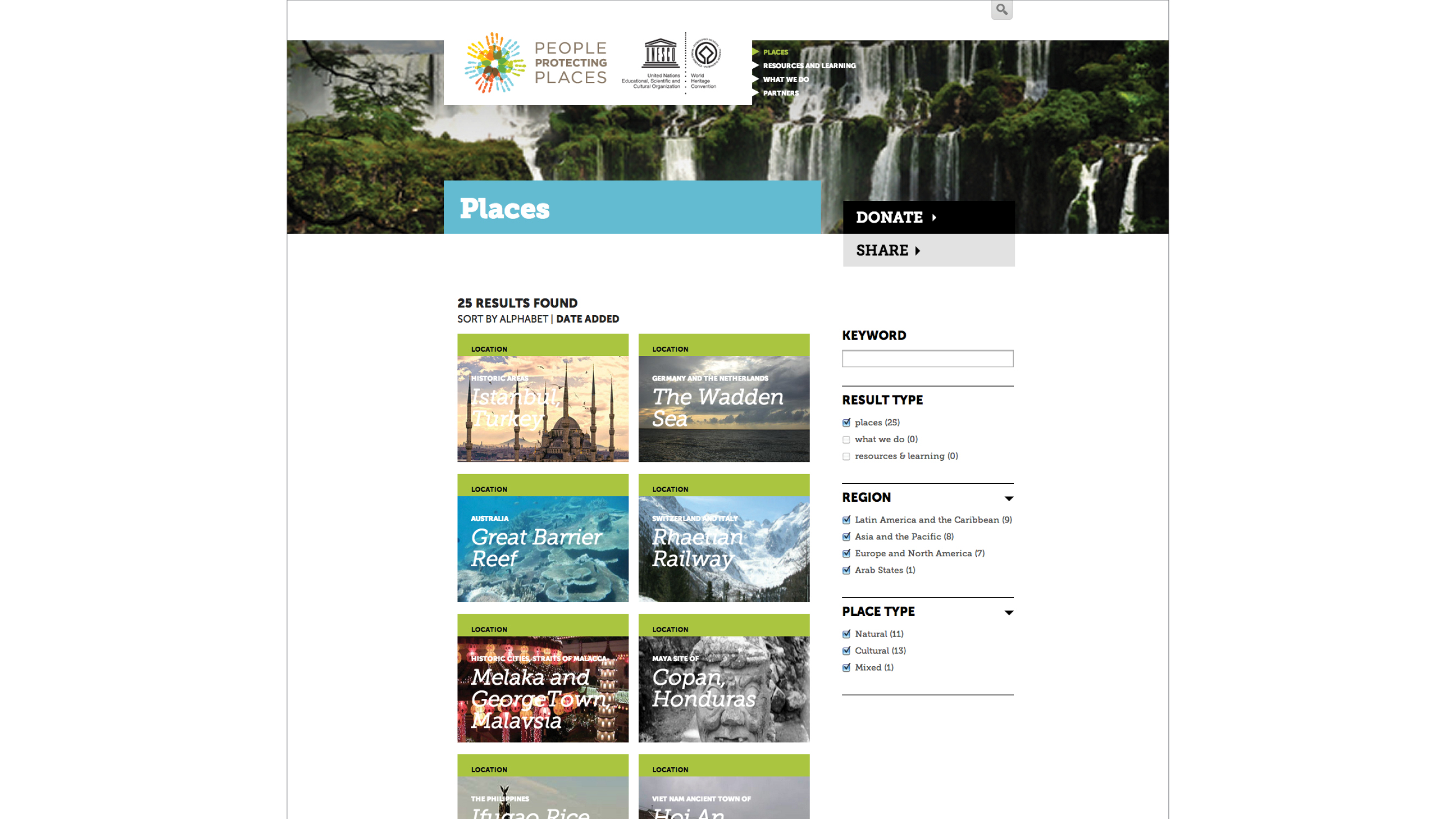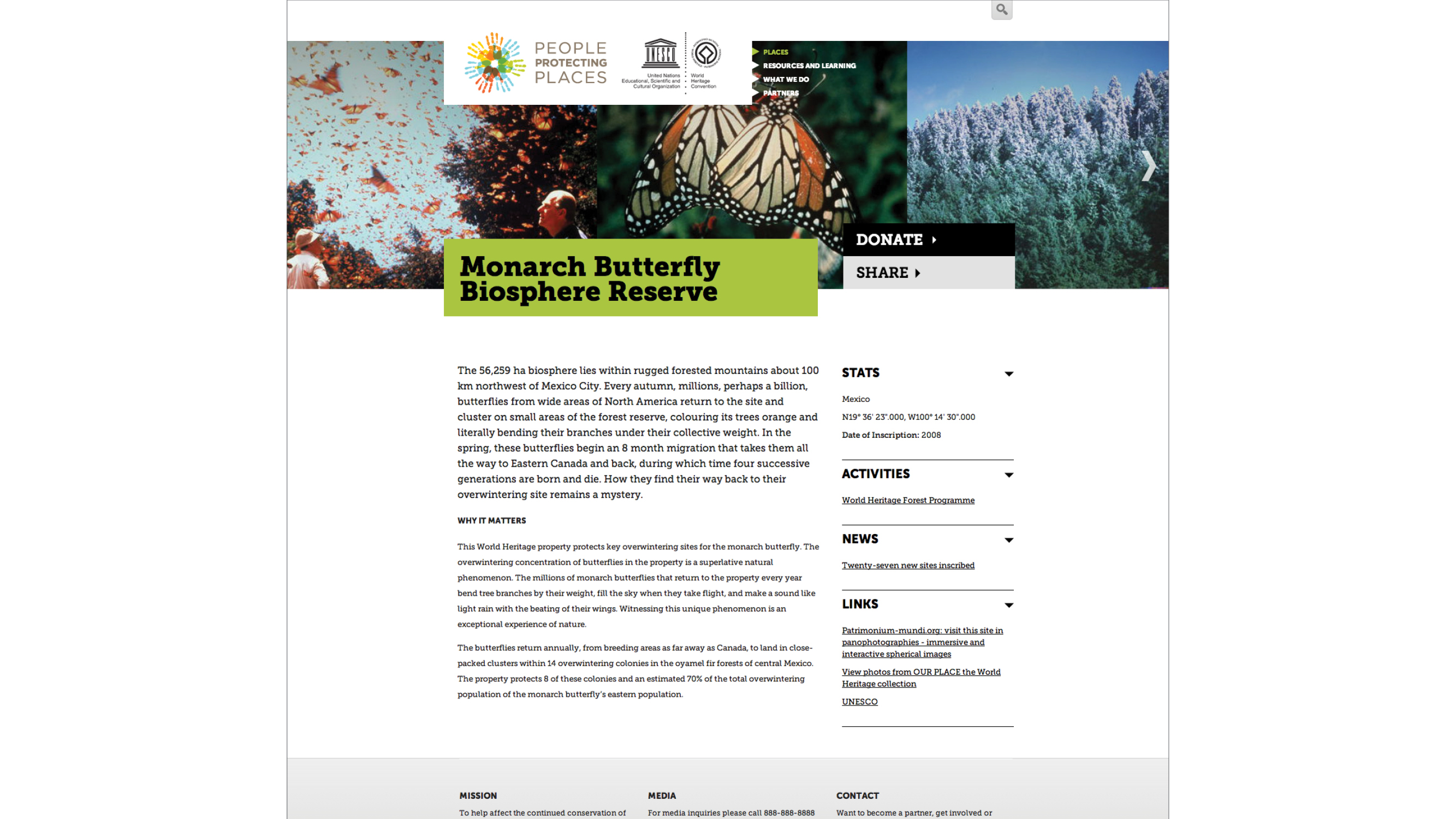/PROFESSIONAL DESIGN WORK
People Protecting Places (2013)
Completed with my company, Skeptic. My role: research, information architecture, visual design concepts, project management.
UNESCO's World Heritage Convention and its employees and volunteers protect 962 of our world's most important places. These places are of historic or ecological significance to humanity. My partners and I at Skeptic were brought in by ISM to help the WHC showcase the incredible work it does.
Our goal was to design and develop a new, public-facing website for the WHC, called People Protecting Places. The focus of the site would be to showcase these incredible places throughout the world, to increase tourism to these places, and to increase donations to the programs that help preserve them.
At Skeptic, we use a three-part methodology for every project: research, design, build. In the research phase of this project, we began by poring over the data on the WHC's current website.
There is a map and a list indicating the name and location of each of the 962 places on the World Heritage List.
Completed with my company, Skeptic. My role: research, information architecture, visual design concepts, project management.
UNESCO's World Heritage Convention and its employees and volunteers protect 962 of our world's most important places. These places are of historic or ecological significance to humanity. My partners and I at Skeptic were brought in by ISM to help the WHC showcase the incredible work it does.
Our goal was to design and develop a new, public-facing website for the WHC, called People Protecting Places. The focus of the site would be to showcase these incredible places throughout the world, to increase tourism to these places, and to increase donations to the programs that help preserve them.
At Skeptic, we use a three-part methodology for every project: research, design, build. In the research phase of this project, we began by poring over the data on the WHC's current website.
There is a map and a list indicating the name and location of each of the 962 places on the World Heritage List.
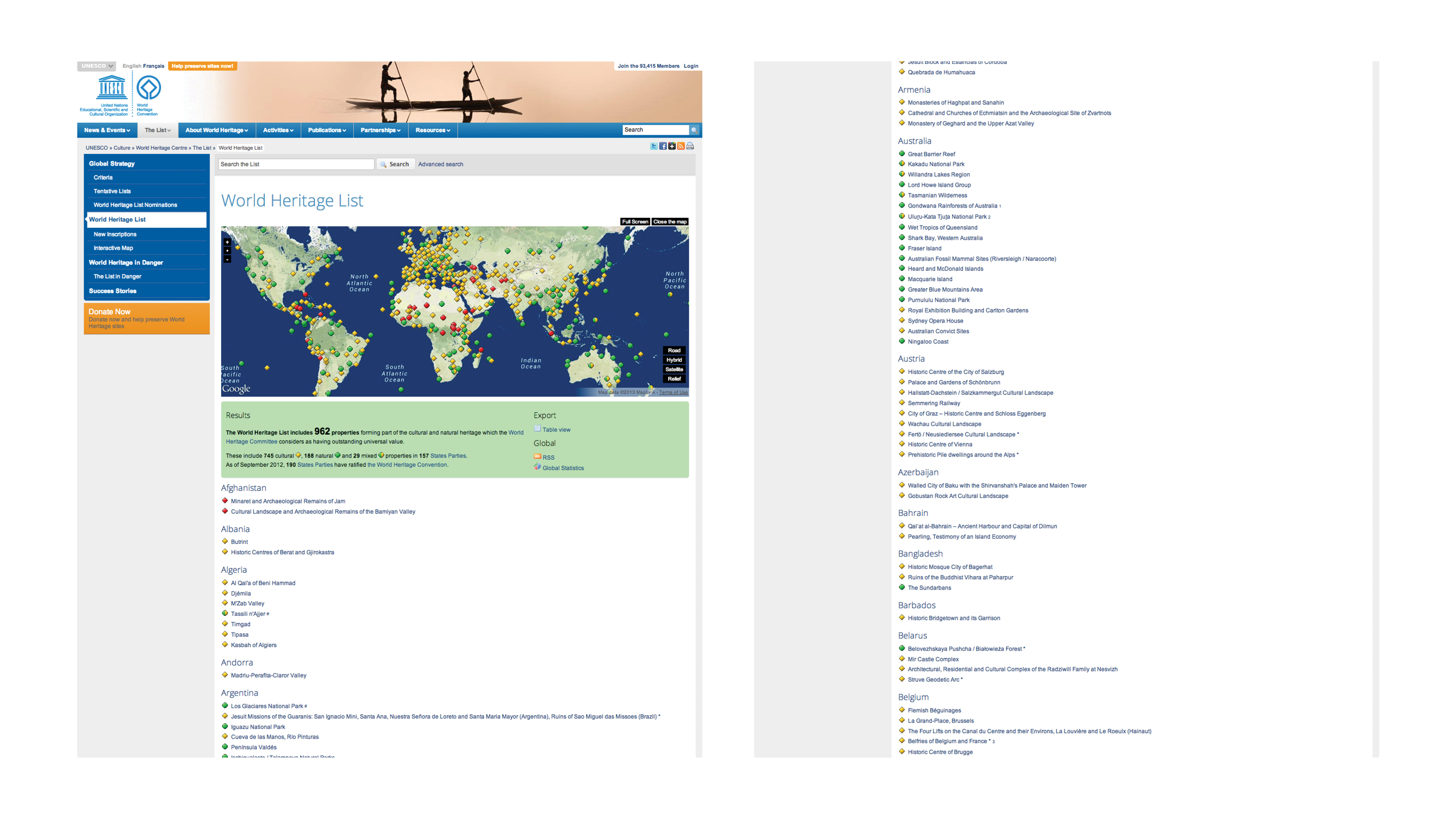
Clicking into each item on the list reveals an amazing amount of information about each of these places.
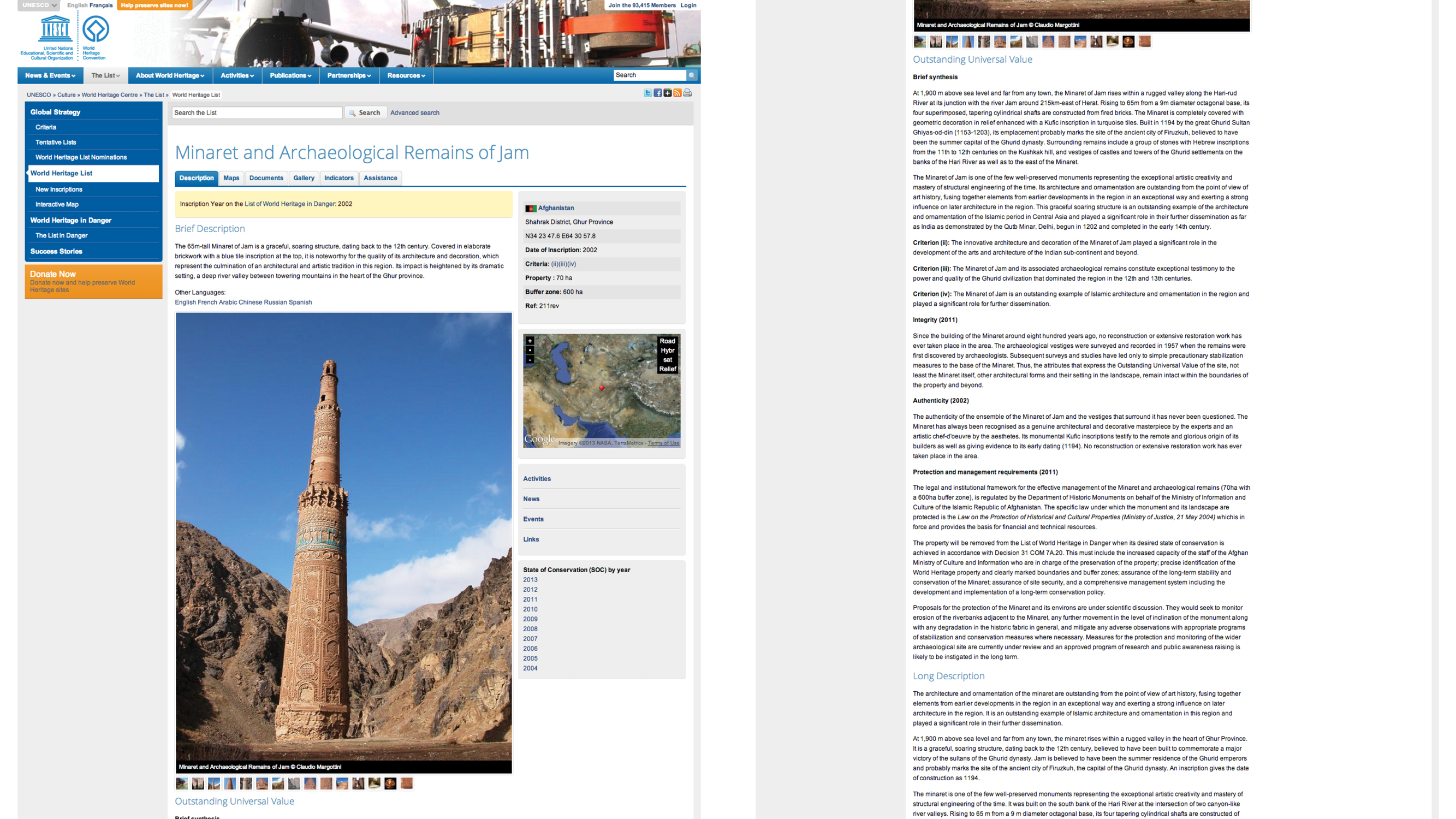
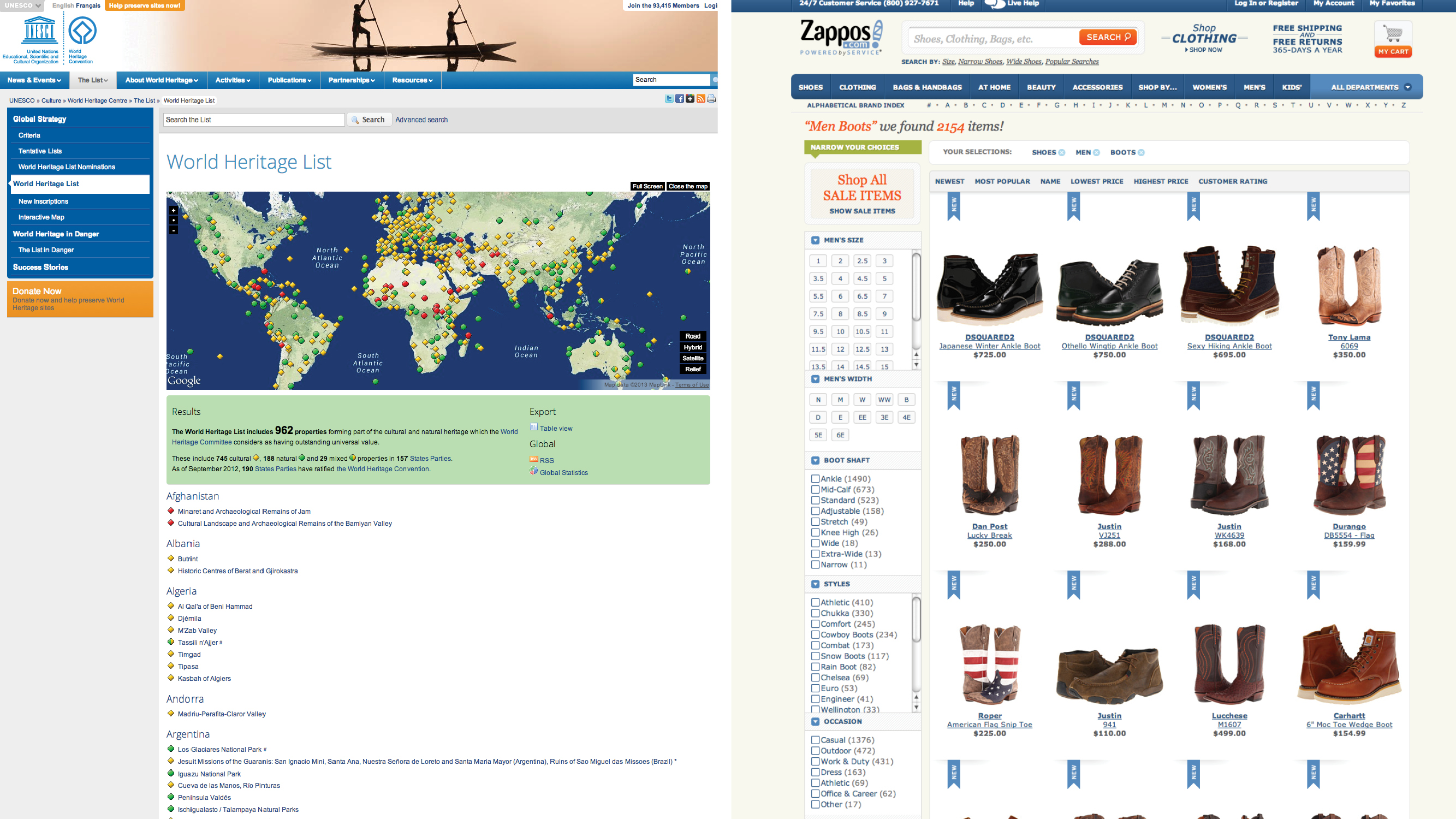
We used the analogy to create the notion of "place detail pages" based on product detail pages in e-commerce.

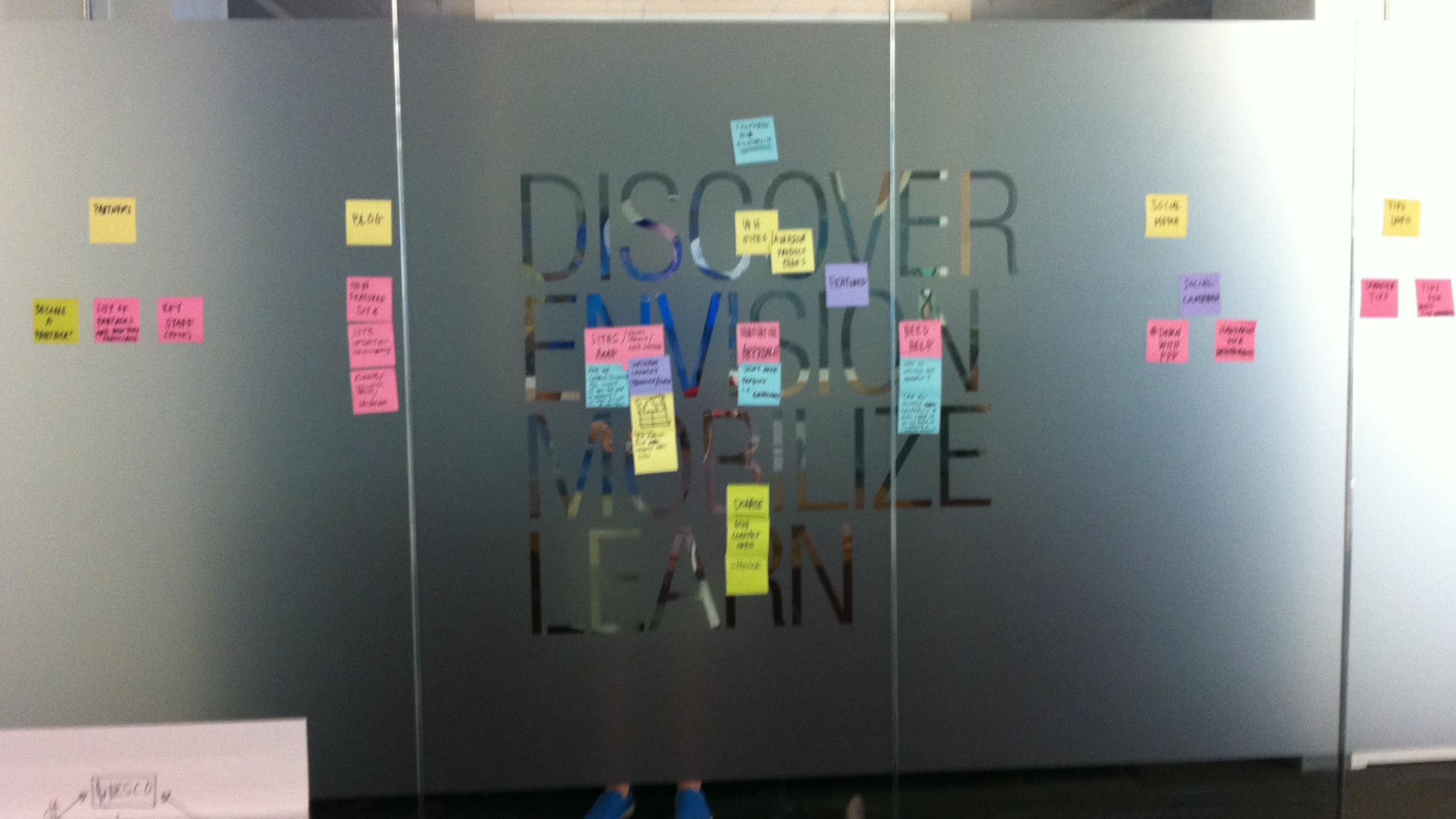
After developing a loose structure for categories and hierarchies of information within the site as a whole, we moved to more detailed sketching and considerations of site-mapping as well as page-level IA.
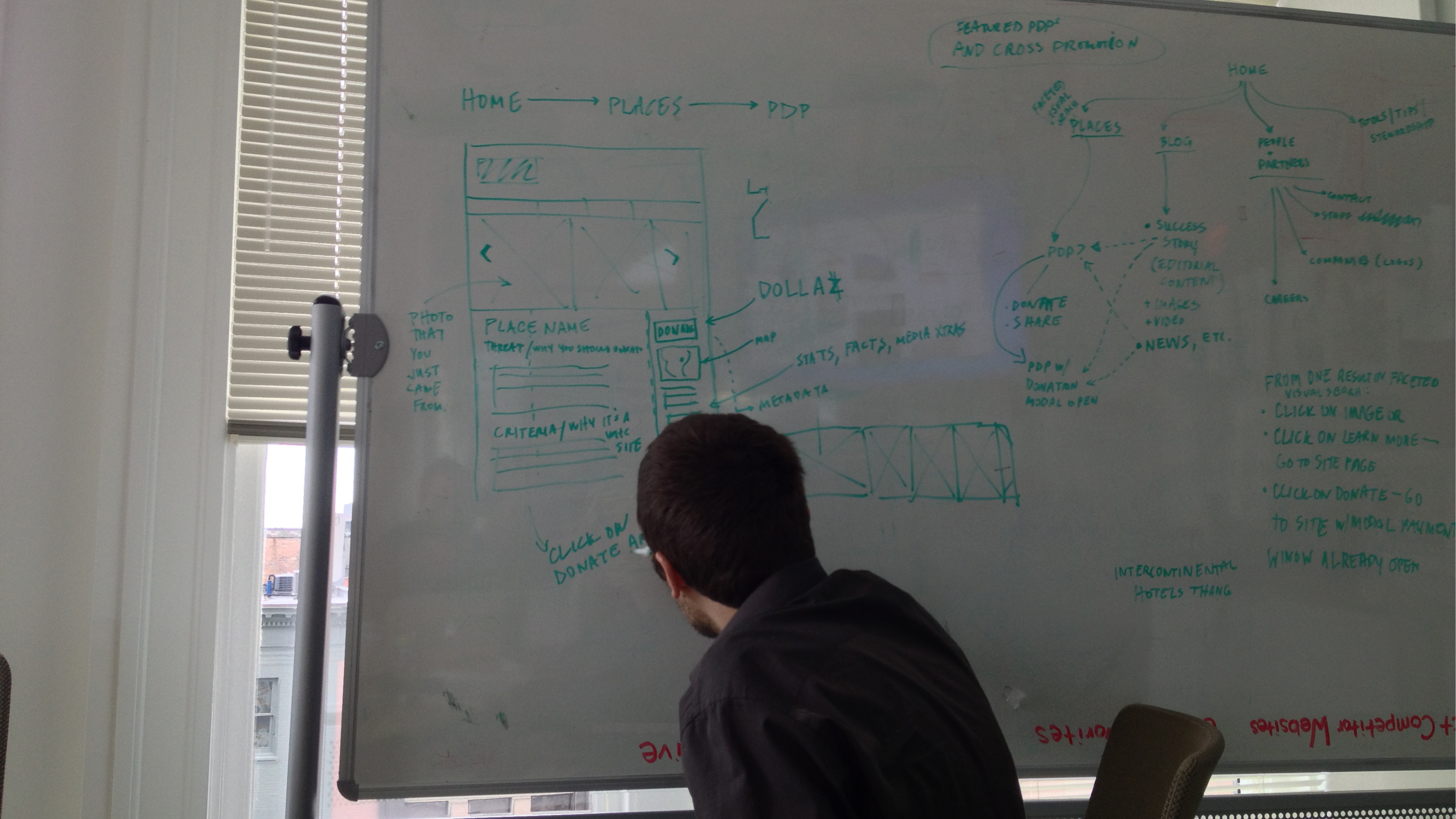
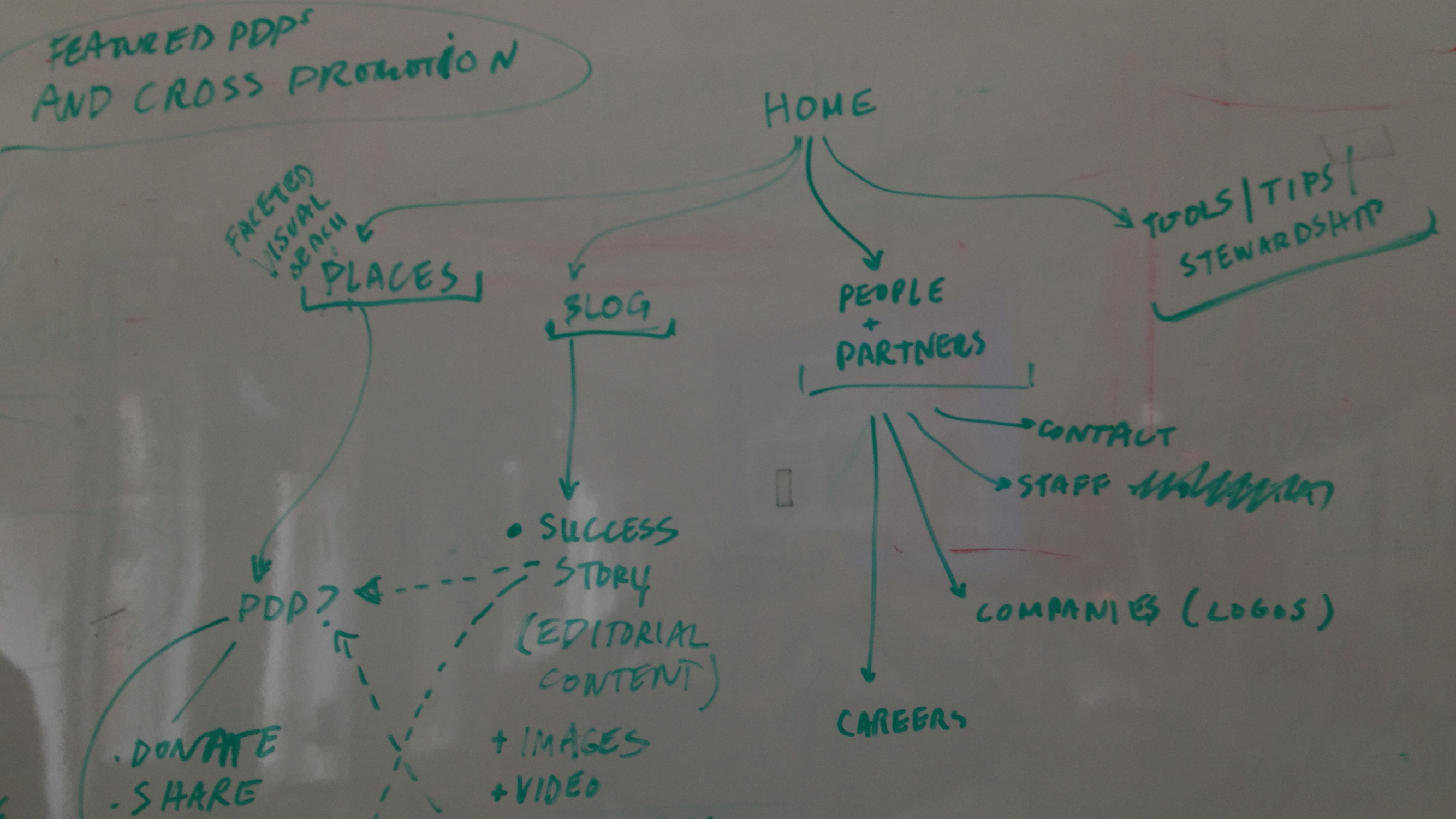
It was very important to us that the site be a highly visual experience. To be "consumer-facing," we needed to develop an experience that felt familiar to users. Our ideas referenced the visual browsing experience of e-commerce sites, as well as other highly-visual, popular experiences such as Tumblr, Pinterest, and Flipboard.
Based on our research and discussions with the client, one set of deliverables for the IA phase of the project was a set of high-fidelity wireframes. We refer to these as "high-fidelity" because they teeter on the edge of designs. We were willing to risk this potential process pitfall because we knew that such a visual experience needed to be communicated to the client at a higher level of detail than the level of detail at which we might typically deliver wireframes in other contexts.
Based on our research and discussions with the client, one set of deliverables for the IA phase of the project was a set of high-fidelity wireframes. We refer to these as "high-fidelity" because they teeter on the edge of designs. We were willing to risk this potential process pitfall because we knew that such a visual experience needed to be communicated to the client at a higher level of detail than the level of detail at which we might typically deliver wireframes in other contexts.
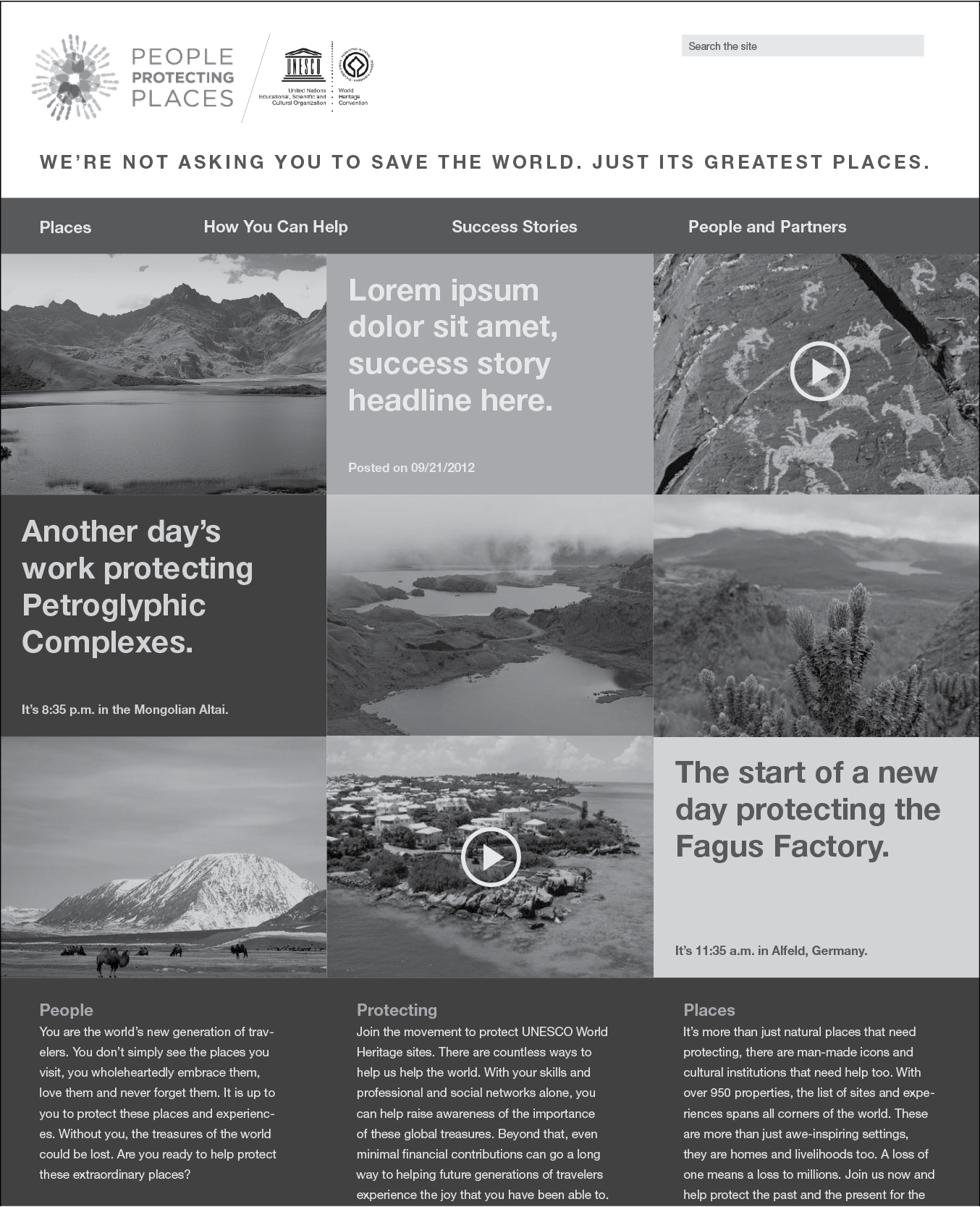
Because this site is intended for use by folks who might not know a whole lot about any of these places, and because there are so many places being protected, we needed to make the site more than just a visual experience. The places needed to be searchable, sortable, and filterable. We therefore implemented a faceted search while retaining large thumbnail imagery so that the experience remained primarily visual.

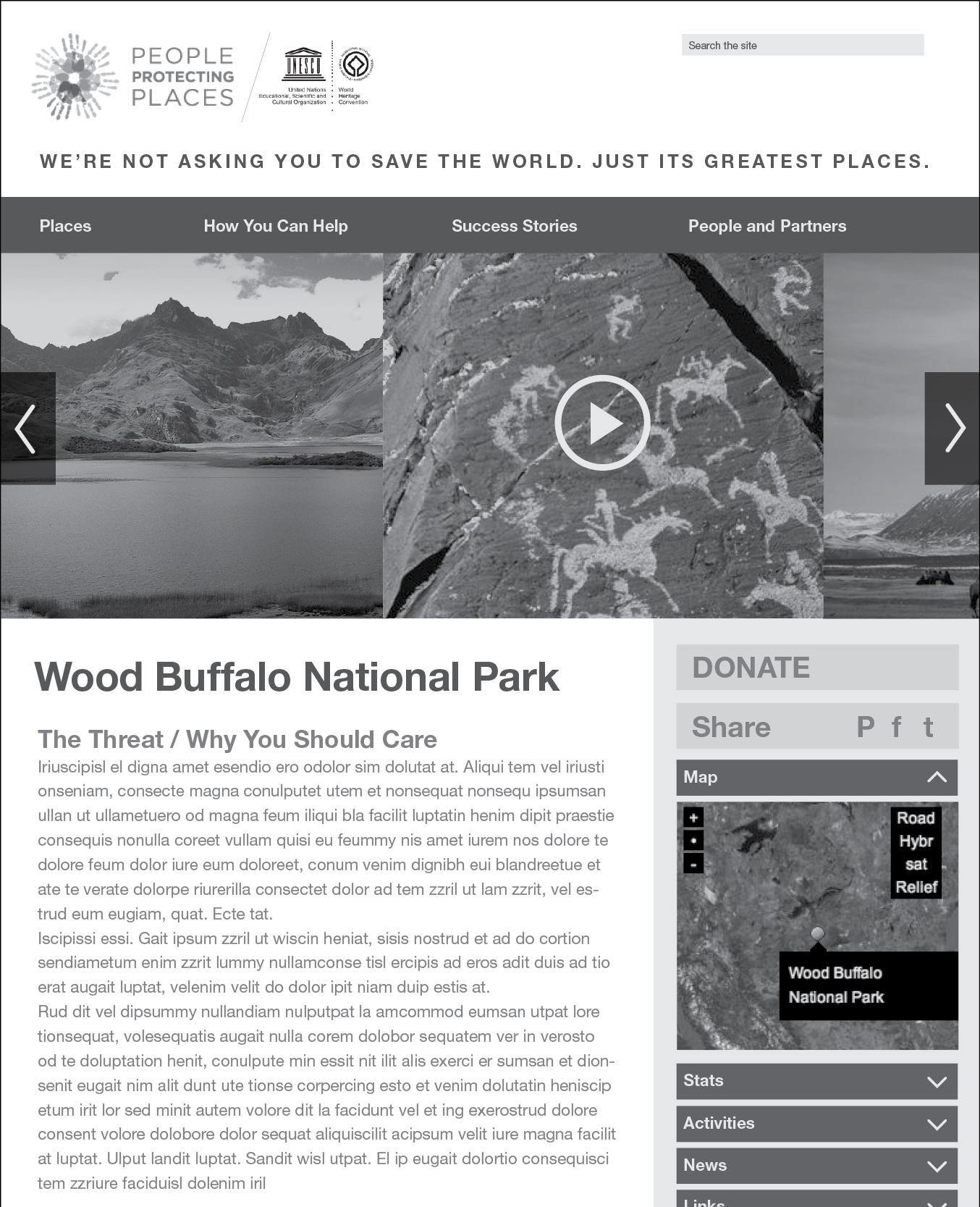
As we moved into the design phase of the project, it was important for us to demonstrate that the detailed wireframes could become designs in a myriad of different ways. We therefore presented three wildly different design directions from which the client selected one for continued refinement.
After settling on a design direction and getting approval on the designs for all the major page types (home, search results, place detail page, etc.), we began work on the build phase—development.
While priding ourselves on our diverse skill sets and abilities, including web development, we at Skeptic know our limits, and we knew something this large and highly database-driven would be better suited for someone else. Thankfully, we have an awesome network of talented colleagues and friends who can lend us a hand.
Our developer for this project, for example, is a friend of ours who lives in New York. Because he couldn't be with us in person for every meeting and whiteboard session, we needed to make him aware of every little decision we made regarding the site, particularly as we wrapped up the design phase. We therefore created a detailed set of annotated designs, which specified not only the visual design of the site, but also specified the behaviors and places from which data would be pulled from different databases at the WHC. These annotated specs even included the language that would auto-populate text fields when users shared a place or photo on different social networks.
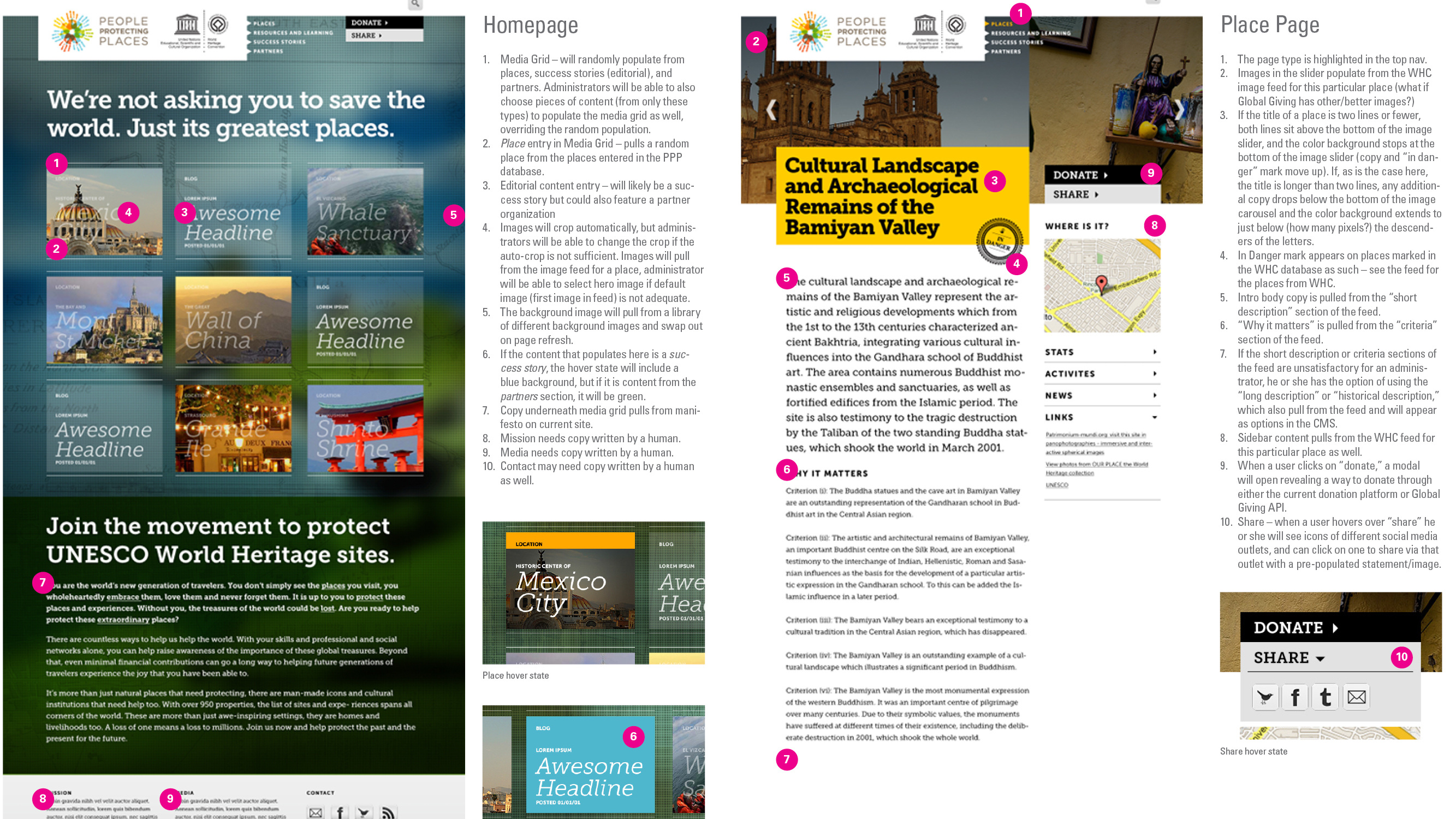
In addition to there being a group of users for whom we were designing the front end of the website, there was an entirely different group of users that would need to be able to add, edit, and remove content from the website on the back end. We therefore worked closely with our developer to create a back-end user experience that made sense for the individuals who would be working with the site day-to-day.
